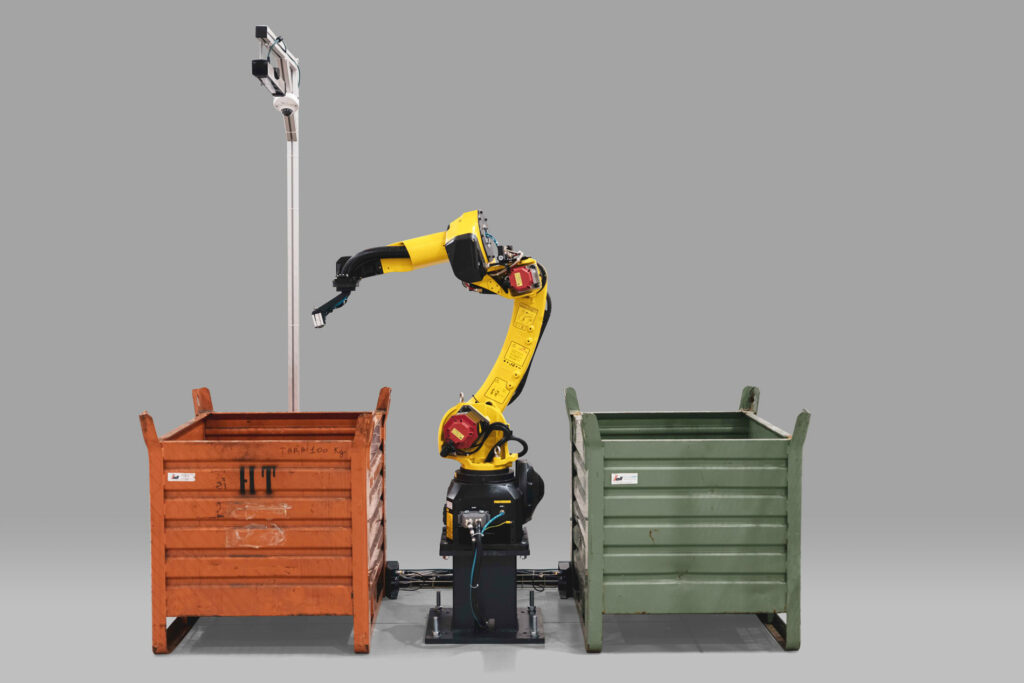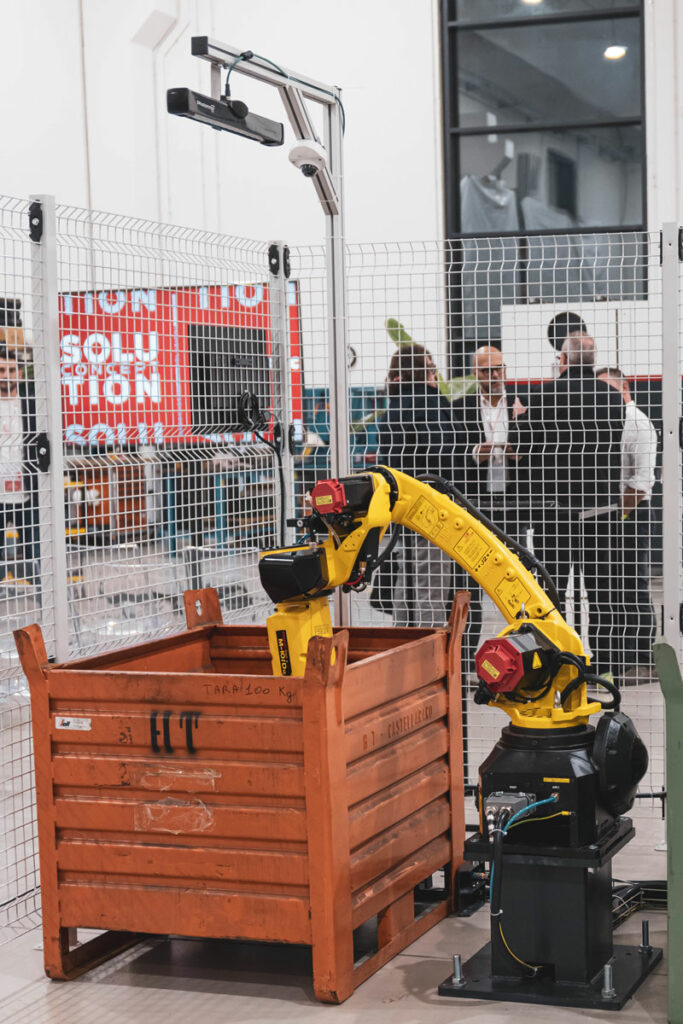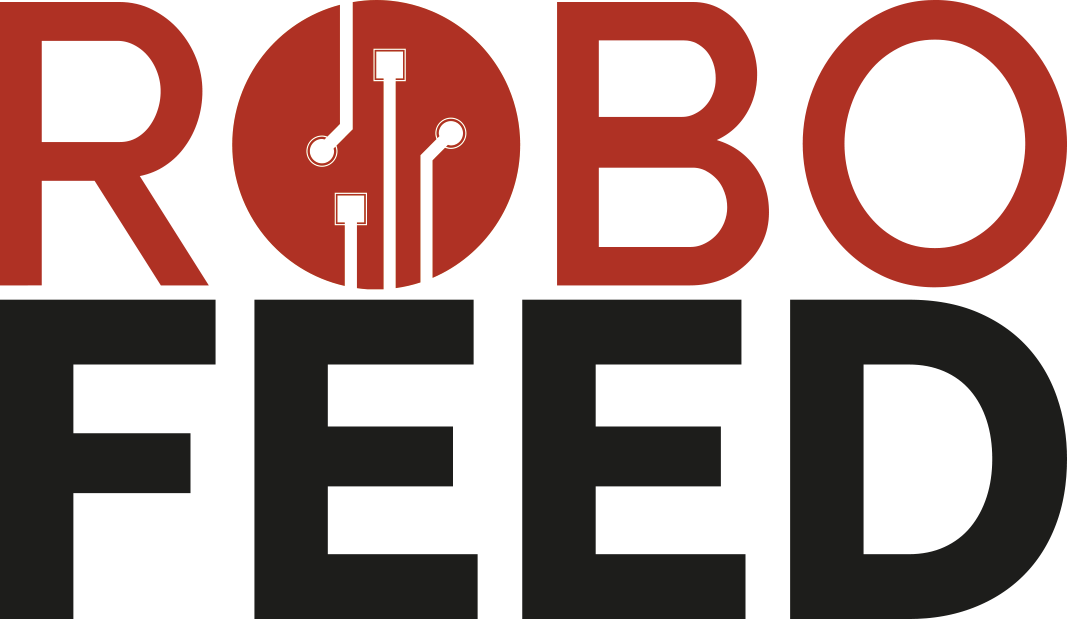
BIN PICKING
3D vision for customised performance solutions
advanced technologies
for solving problems
Bin Picking was developed to solve a number of problems faced by our customers, such as palletising workpieces, reducing the physical effort required by the operator when loading and unloading machine tools, and reducing handling times.
When the first Bin Picking solutions were created, we encountered a mathematical and physical problem typical of robotics and vision, which was overcome only with the introduction of 3D vision, coupled with an anthropomorphic robot. Initially, 3D vision was achieved by means of a fairly rudimentary laser scan, which scrolled on a linear axis of the vision system to reconstruct the data. The technological progress over the last 15 years has enabled what was previously considered a mathematical problem to become a technology accessible to everyone and ready to use.
three main factors have contributed
to the evolution of this technology
1
3D SENSORS
The introduction of 3D sensors has made it possible, without moving the parts, to capture a very precise 3D image of the acquired volume. This technology allows improved performance both in terms of the speed of the operation itself and with regard to grip.
2
CALCULATION SPEED
The greater calculation speed of the on-board computers that predict all robot trajectories and movements.
3
SOFTWARE EVOLUTION
The evolution of software in recent years.
Bin Picking is thus a system of picking workpieces in bulk from a bin to transfer them to a storage station, a depot chosen by the customer, or to a processing cycle.
The complexity of this technology can be explained by the ratio of the size of the object to be picked to the crate containing it.
When a very large object to be picked from a small crate, we speak of a simple application. When, on the other hand, a small object is to be picked from a very large crate, we speak of a more complex application, as a higher degree of repeatability and accuracy is required.
SEE AN OPERATIONAL EXAMPLE
FIRST-HAND
In our show room we have set up an example of Bin Picking of a piece of raw sheet metal measuring 90x80x3 mm for the purpose of palletising parts.
As there may normally be thousands of parts inside the bin, the degree of complexity we had to deal with was quite high.
Data la difficoltà medio alta dell’applicazione è stato scelto un sensore 3D tecnologicamente molto avanzato che consente di avere un’accuratezza e una velocità notevole sul dato. The robot chosen, on the other hand, is a Fanuc M 10 iD – 12, which allows an extremely high performance in terms of speed and a minimal footprint, favouring a completely agile entry into the bin without any type of obstacle.

OUR APPROACH
Based on the type of product and customer requirements, a preliminary feasibility check is carried out. This initial analysis enables us to provide the customer with a series of data that are indispensable for formulating the choice: feasibility outcome, cycle times, bin emptying rate, type of robot and gripper systems, cell layout and many other useful data. In addition to a simulation aimed at the required specifications, it enables the operator to see a working application at any time.

ADVANTAGES
- More accurate palletising
- Reduced working time
- Reduced labour costs
- Constant and continuous operation without interruptions (unmanned cycle)
- Safety light curtains that interrupt the machining cycle as soon as they detect a human presence
- “INDUSTRY 4.0” ready solution
- Compact cell dimensions
- Great precision of the robot in entering and exiting the bin, thanks to the software that prompts the robot with all the paths to be followed
- Possibility of having several bins with bulk parts, even of different types, with a single 3D vision system: the robot will automatically move on to the next bin when the first one has been emptied, without the need for operator intervention
- It has beam sensors to detect all types of bins being handled (wood, plastic, iron, etc.)
- Multiple possibilities for using the retrieved piece: palletising, sending it to the next processing stage and handling



